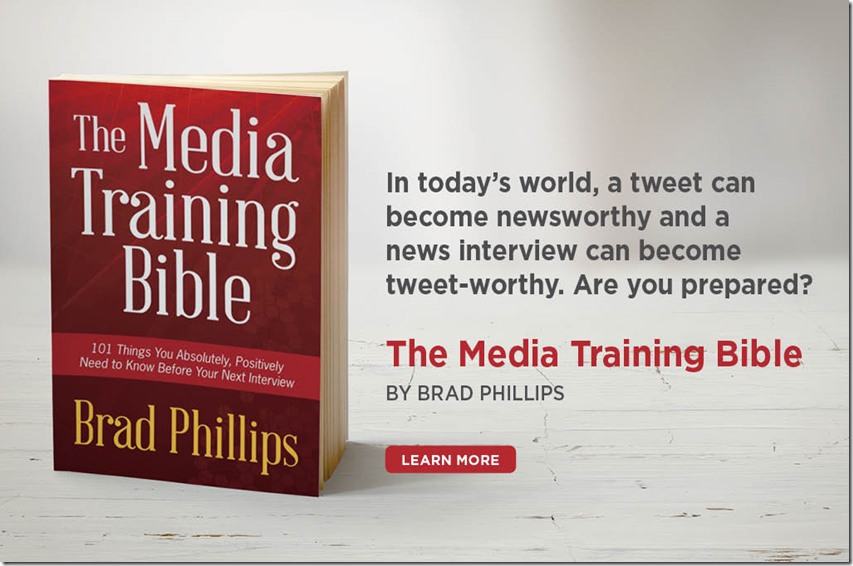The Three Things To Kill In Your Media Interviews
This excerpt, about creating a winning media message, is from The Media Training Bible: 101 Things You Absolutely, Positively Need to Know Before Your Next Interview.
Memory studies consistently find that people forget the vast majority of what they read, hear, or see, especially if they are only exposed to the information one time.
One early study by Herman Ebbinghaus, the 19th-century German psychologist who was among the first to study human memory, found that people forget most of what they learn within days. Although his pioneering research was conducted more than a century ago, it still rings true for those of us who can never quite remember where we left our car keys.
The “U” in CUBE A demands that your messages remain unburdened by three things: wordiness, jargon, and abstractions. The more a message tries to say—and the more abstractly it tries to say it—the less likely it is to be memorable.

As a general guide, aim for messages that: have no more than two commas; contain no more than 30 words; and evoke concrete images.
1. Too many words
Resist the temptation to jam everything you can into a single message—omitting less important details makes good sense. After all, if editors are only going to include two of your quotes in a finished news story, don’t you want them to choose your two most important messages? If the editor decides to run your fourth and seventh most important messages instead, I’d question whether your interview was a success.
2. Technical jargon
Unburdened messages require you to throw jargon overboard. Our clients in technical fields—such as scientists, physicians, and engineers—are the worst offenders of this rule. In fairness, their professional lives are spent awash in technical gobbledygook, their office conversations littered with words rarely used and barely understood by the general public. But considering that the public suffers from information overload, any words that prevent people from quickly grasping your meaning will result in messages that are quickly forgotten.
Even if you think your audience will understand more complicated terms as long as you use them “in context,” don’t use them (or at least define them if you do). They won’t hear the end of your sentence if they’re still trying to process the unfamiliar word you uttered at the beginning.
An Actual Quote from a Real Press Release
“The gradualness (oriented primarily towards actual users) of the new Handy Backup is the succession of interfaces. With all the maximal simplicity and refined usability, the new one is designed to look structurally associative to the previous version…”
Abstractions, or broad concepts or ideas, are difficult for people to visualize. “Justice,” for example, is an abstraction—just try instantly conjuring up a detailed image of that word. A more concrete message about justice might mention the need to punish thieves who rob old ladies by imprisoning them for the next 20 years. That type of concrete message is much more memorable, and therefore works better for media messaging than an abstract one does. Chip and Dan Heath, the authors of the excellent book Made to Stick, write that “trying to teach an abstract principle without concrete foundations is like trying to start a house by building a roof in the air.”
The goal of most communications is to move an audience from lack of awareness to awareness to action. The more unburdened your messages, the more likely you are to achieve that goal.
The Media Training Bible is available from Amazon here and for the Kindle here. For other eBook formats and to read free sample lessons, click here.




I just arrived in my hotel room ready to tape a television segment tomorrow morning, and (as always) I appreciate your words of wisdom. Although this is not my first go-around, it always helps for me to remember to keep it short, sweet, and on point. Thanks!
Kathy,
Thank you so much for your comment – I’m delighted to read that my posts are providing you with some value! On what topic will you be interviewed tomorrow – something related to your book about how to be the perfect guest?
As they say in the stage world, break a leg tomorrow. Thanks for reading.
Brad
[…] qualified this person may be, you have to make sure he feels comfortable answering questions and can stay “on message” – which includes being brief, direct, easy-to-understand and […]